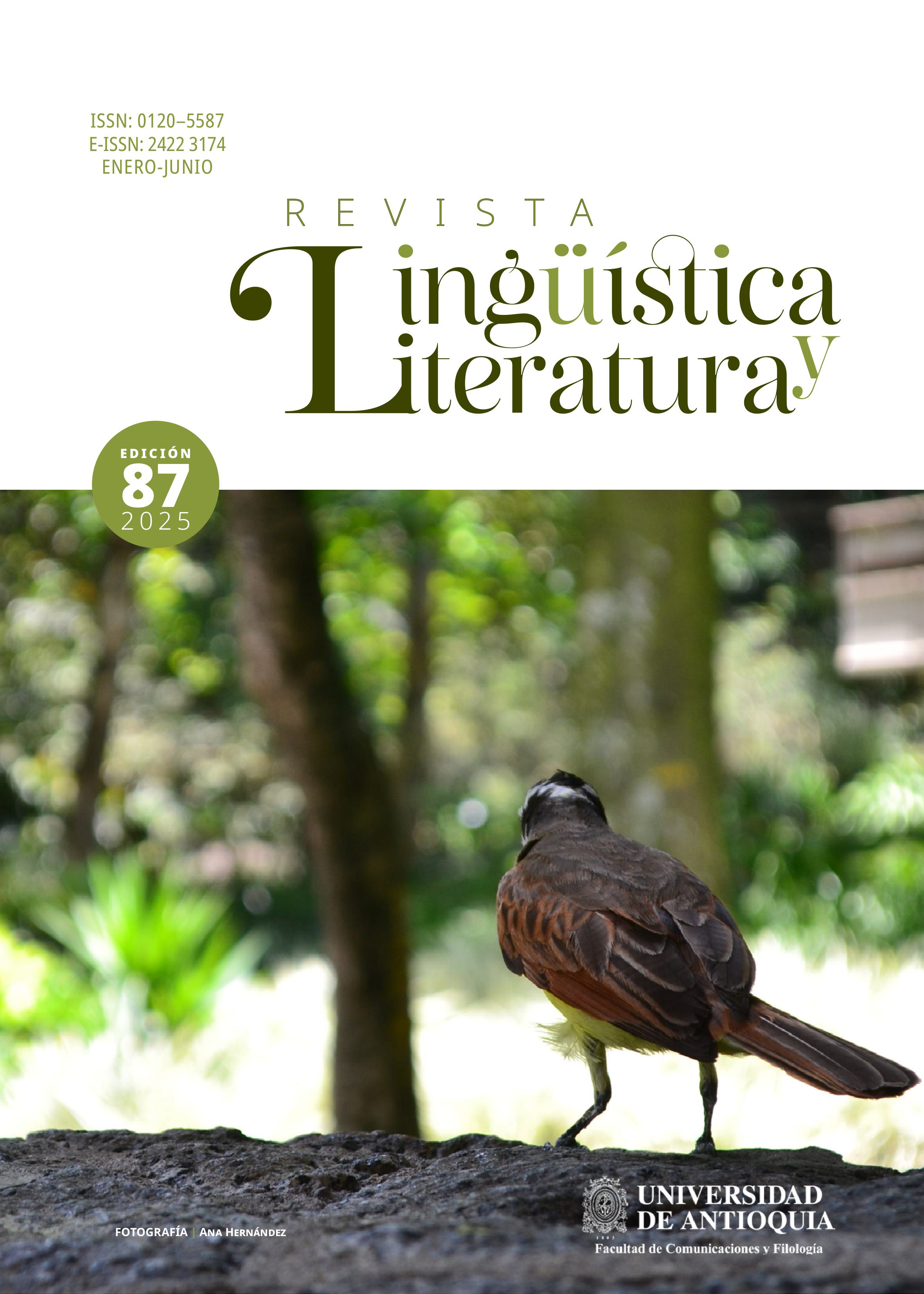La Configuración del pícaro en la novela Tragicomedia de burócratas de César Rivas Lara
DOI:
https://doi.org/10.17533/udea.lyln.87a06Keywords:
César Rivas Lara Tragicomedia de burócratas, Afro-Colombian literature, cult, cultural studiesAbstract
This article, framed within the universe of cultural studies, will show how Rivas Lara appropriates the classic elements of the Spanish-American "La Picaresca" and then subverts them by configuring, in his novel "Tragicomedia de burócratas”, a rogue model through the vices of a despotic political class indifferent to the needs of Afro-Colombian community. First, a broad overview of the work will be presented, summarising its plot, characterising its language, establishing points of convergence with productions in Colombian and Latin American literature. Then, we will review the characteristics of "La Picaresca" in Spanish-America based on the rigorous study of the Madrid researcher María Casas de Faunce, converging and contrasting with the contributions of Gustavo Correa, Alonso Zamora, Mireya Suárez, among other researchers. The aim is to find the meaning of the aesthetic elements that Rivas Lara appropriates and which he then invests with Afro-Colombian identity in his novel. In the third part, we will explain how this subversion is carried out: the configuration of the rogue, his relationship with the environment where the events take place, the social framework that is constructed and criticised, the use of humour, irony and satire as vehicles not only to satirise, but also to show aspects of the popular culture and language of Chocó, while at the same time the moralising reflections that the novel seeks to convey.
Downloads
References
Referencias bibliográficas
Brathwaite, E. K. (1977). Presencia africana en la literatura del Caribe. En M. Moreno (relator) África en América Latina (pp. 152-184). Fraginals, Siglo XXI Editores.
Carreter, F. (1970). Para una revisión del concepto “novela picaresca”. Actas del tercer congreso internacional de hispanistas (pp. 27-45). El Colegio de México.
Casas de Faunce, M. (1977). La novela picaresca latinoamericana. Planeta/Universidad de Puerto Rico.
Correa, G. (1977). El héroe de la picaresca y su influencia en la novela moderna española e hispanoamericana. Thesaurus, Tomo XXXII, núm. 1, Centro Virtual Cervantes. http://cvc.cervantes.es/lengua/thesaurus/pdf/32/TH_32_001_075_0.pdf
Fernández de Lizardi, J. (1986). El Periquillo Sarniento, Tomo II. La Oveja Negra.
Gutiérrez, M. (1997). “El mito negro y boga en Colombia: sus leyendas y sus bases”. En: Ortiz, Lucía (editora). “Chambacú, la historia la escribes tú” (pp. 233-254). Vervuert: Iberoamericana,
Hall, S. (2003). ¿Quién necesita identidad? Cuestiones de identidad cultural (pp. 13-39). Amorrortu.
Iffland, J. (1989). El pícaro y la imprenta. Algunas conjeturas acerca de la génesis de la novela picaresca. Actas del Noveno Congreso de la Asociación Internacional de Hispanistas (pp. 495-506).
Mars, A. (2003). “Entre la risa y la ironía. Conversaciones sobre el humor”. Quimera, 232-233, 66-70.
Palacios, A. (2010). Las estrellas son negras. Ministerio de Cultura de Colombia.
Prescott, L. (1996). Perfil histórico del autor afrocolombiano: Problemas y perspectivas. América Negra, 12, 107-128.
Rivas, C. (1996). Miguel A. Caicedo: vida y obra. Guimon Editores
Rivas, C. (2008). Tragicomedia de burócratas. Lealón.
Roas, D. (2003). “Humor y literatura”. Quimera, 232-233, 10-11.
Rodríguez, B. (2005). Antología de la novela picaresca española. Centro de Estudios Cervantinos.
Salom Becerra, Á. (1998), Al Pueblo nunca le toca. Tercer Mundo Editores.
Salvat, M. (1973). El humorismo. Salvat Editores, S. A.
Sobejano, G. (1964). Sobre la novela picaresca contemporánea. Boletín Informativo de Derecho Político, 31, 213-225.
Suárez, M. (1926). La novela picaresca y el pícaro en la literatura española. Imprenta latina.
Vargas, N. (2006). “Aproximación al problema de las minorías. Mujeres, negros e indígenas en el mapa historiográfico de la literatura colombiana”. Lingüística y Literatura, 49, 115-133.
Velásquez, R. (1992). Las memorias del odio. Colcultura.
Zamora, A. (2003). Qué es la novela picaresca. Biblioteca Virtual Universal. http://www.biblioteca.org.ar/libros/92707.pdf.
Downloads
Published
How to Cite
Issue
Section
License
Copyright (c) 2024 Lingüística y Literatura

This work is licensed under a Creative Commons Attribution-NonCommercial-ShareAlike 4.0 International License.
Creative Commons by-nc-sa
Those authors who have publications with this journal, accept the following terms:
1. The journal is the owner of the copyright of the articles, which will be simultaneously subject to the Creative Commons Attribution-NonCommercial-ShareAlike 4.0 International License. that allows third parties to share the work provided its author is indicated and its first publication in this journal.
2. The authors may adopt other agreements of non-exclusive license of distribution of the version of the published work (e.g., deposit it in an institutional telematic file or publish it in a monographic volume) provided that the initial publication in this journal is indicated.
3. Authors are allowed and recommended to disseminate their work via the Internet (e.g. in institutional telematic files or on their website) before and during the submission process, which can produce interesting exchanges and increase citations of the published work.











